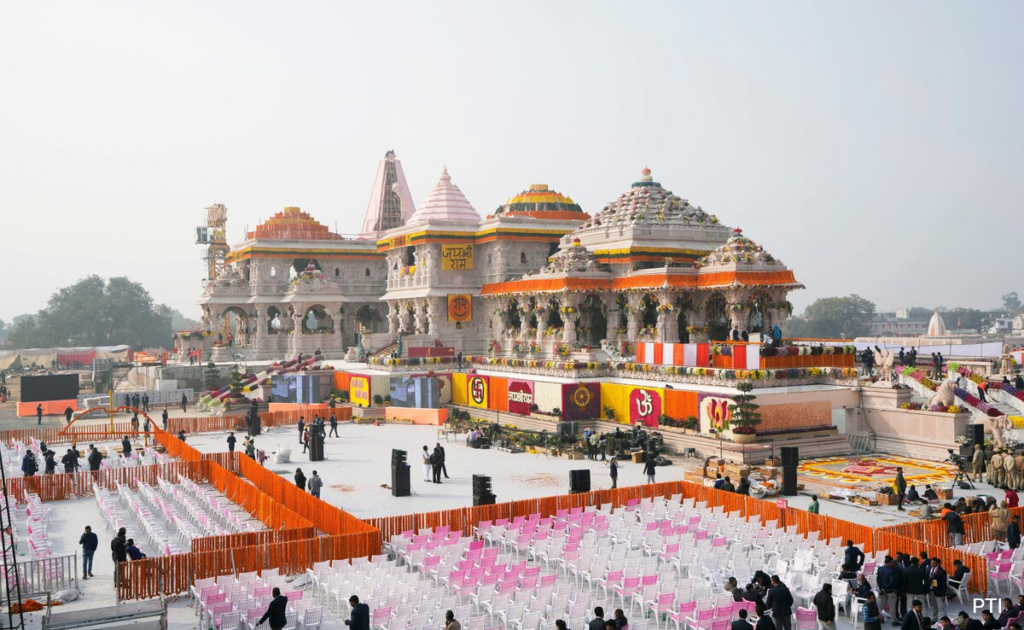Editorial
How Ram Mandir Consecration in Ayodhya is unifying India
The consecration was not merely a Hindu event; it became a celebration of interfaith harmony. Leaders, businessmen, artisans and workers from various religious communities joined hands in a show of solidarity, emphasizing the importance of mutual respect and understanding.
In a historic moment that echoed across the nation, the consecration of the Ram Mandir in Ayodhya on 22nd January 2024 stands not only as a monumental religious event but as a powerful catalyst for unity in diverse India. The grandeur of the ceremony has woven threads of solidarity, fostering a sense of oneness that transcends cultural, linguistic, and regional

boundaries.
A Spiritual Milestone
The Ram Mandir, a symbol deeply embedded in the cultural fabric of India, has been a dream for many. The consecration marked the realization of this dream, and the resonance of its significance was felt far beyond the sacred precincts. Devotees from every corner of the country, representing myriad beliefs, gathered to witness the sanctification of a space that holds profound cultural and spiritual importance.
A Tapestry of Unity:
One cannot overlook the diverse mosaic that is India, with its multitude of languages, traditions, and religions. Yet, the consecration of the Ram Mandir served as a unifying force, highlighting the shared cultural heritage that binds the nation together. People from different walks of life, regardless of their background, found a common ground in celebrating this spiritual milestone.

Interfaith Harmony
The consecration was not merely a Hindu event; it became a celebration of interfaith harmony. Leaders, businessmen, artisans and workers from various religious communities joined hands in a show of solidarity, emphasizing the importance of mutual respect and understanding. This shared reverence for the Ram Mandir became a bridge connecting hearts across religious divides, fostering a spirit of inclusivity.
National Pride
The Ram Mandir consecration was more than a religious ceremony; it was an assertion of national identity. As the world witnessed the grandeur of the event, India stood tall, proud, and united. The collective pride emanating from every citizen underscored the idea that diversity is India’s strength, and the ability to celebrate differences while embracing a shared cultural legacy is what makes the nation truly exceptional.
Cultural Renaissance
Beyond the religious and political implications, the consecration sparked a cultural renaissance. The rich tapestry of India’s heritage, with its ancient stories and artistic expressions, came alive. The event acted as a catalyst for the preservation and promotion of the country’s cultural roots, ensuring that traditions are not just remembered but actively woven into the fabric of contemporary life.
In conclusion, the consecration of the Ram Mandir stands as a poignant chapter in India’s history—one that goes beyond religious boundaries and political affiliations. It is a testament to the nation’s ability to find unity in diversity, celebrating its cultural heritage and paving the way for a harmonious and inclusive future. In the echoes of the sacred chants, India discovers a shared identity that transcends the boundaries of the physical structure, embracing the essence of unity in its truest form.


























